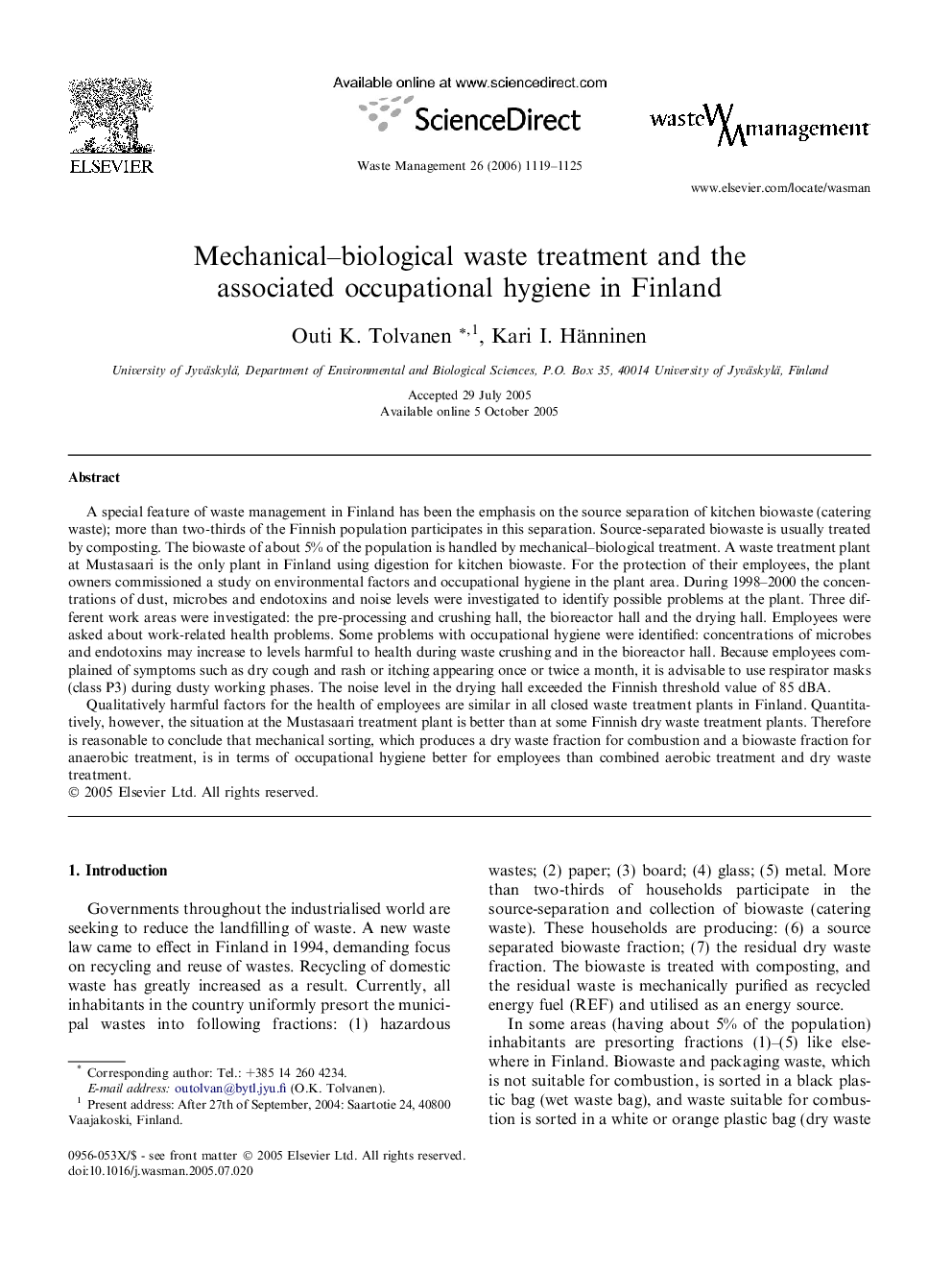| کد مقاله | کد نشریه | سال انتشار | مقاله انگلیسی | نسخه تمام متن |
|---|---|---|---|---|
| 4473868 | 1315111 | 2006 | 7 صفحه PDF | دانلود رایگان |

A special feature of waste management in Finland has been the emphasis on the source separation of kitchen biowaste (catering waste); more than two-thirds of the Finnish population participates in this separation. Source-separated biowaste is usually treated by composting. The biowaste of about 5% of the population is handled by mechanical–biological treatment. A waste treatment plant at Mustasaari is the only plant in Finland using digestion for kitchen biowaste. For the protection of their employees, the plant owners commissioned a study on environmental factors and occupational hygiene in the plant area. During 1998–2000 the concentrations of dust, microbes and endotoxins and noise levels were investigated to identify possible problems at the plant. Three different work areas were investigated: the pre-processing and crushing hall, the bioreactor hall and the drying hall. Employees were asked about work-related health problems. Some problems with occupational hygiene were identified: concentrations of microbes and endotoxins may increase to levels harmful to health during waste crushing and in the bioreactor hall. Because employees complained of symptoms such as dry cough and rash or itching appearing once or twice a month, it is advisable to use respirator masks (class P3) during dusty working phases. The noise level in the drying hall exceeded the Finnish threshold value of 85 dBA.Qualitatively harmful factors for the health of employees are similar in all closed waste treatment plants in Finland. Quantitatively, however, the situation at the Mustasaari treatment plant is better than at some Finnish dry waste treatment plants. Therefore is reasonable to conclude that mechanical sorting, which produces a dry waste fraction for combustion and a biowaste fraction for anaerobic treatment, is in terms of occupational hygiene better for employees than combined aerobic treatment and dry waste treatment.
Journal: Waste Management - Volume 26, Issue 10, 2006, Pages 1119–1125